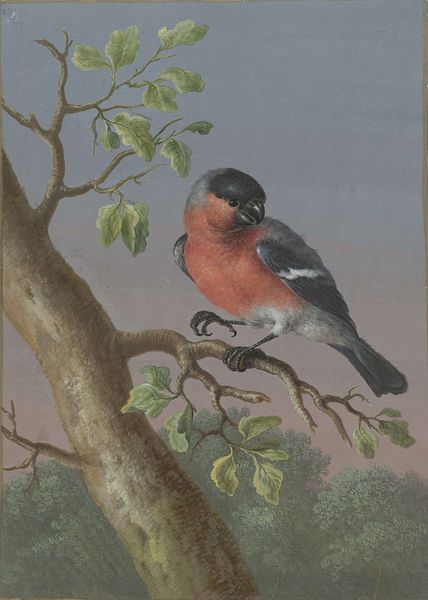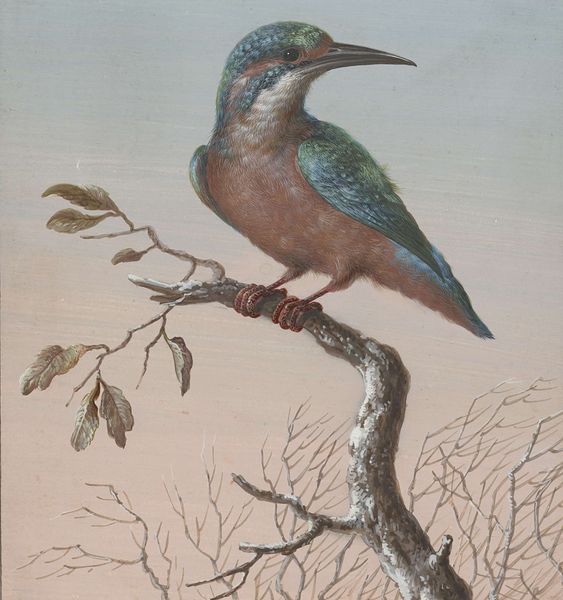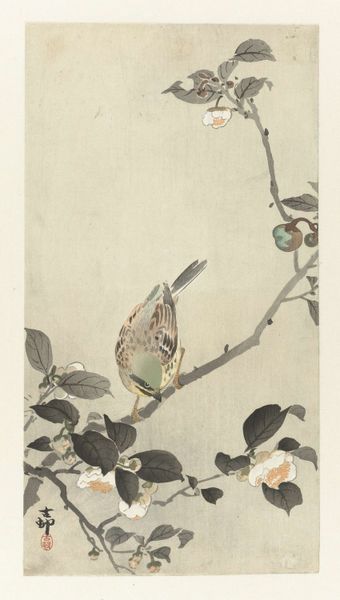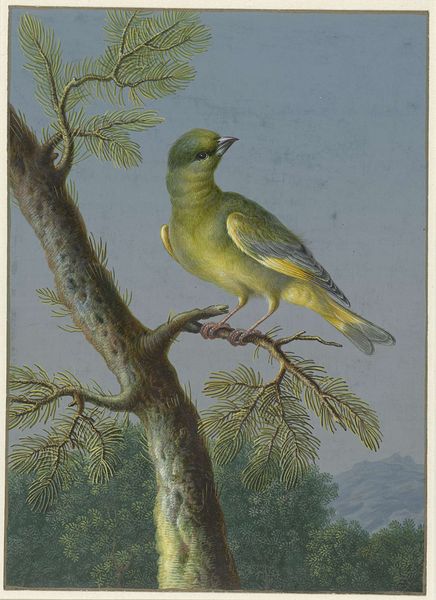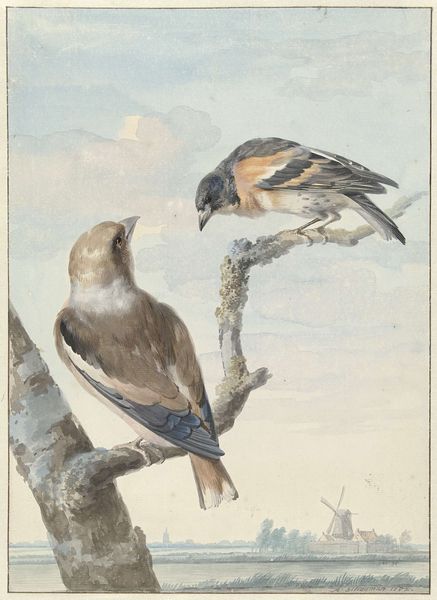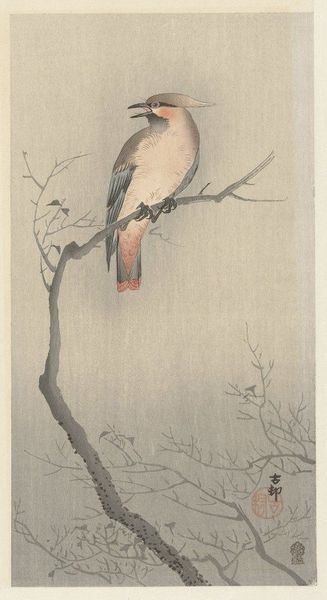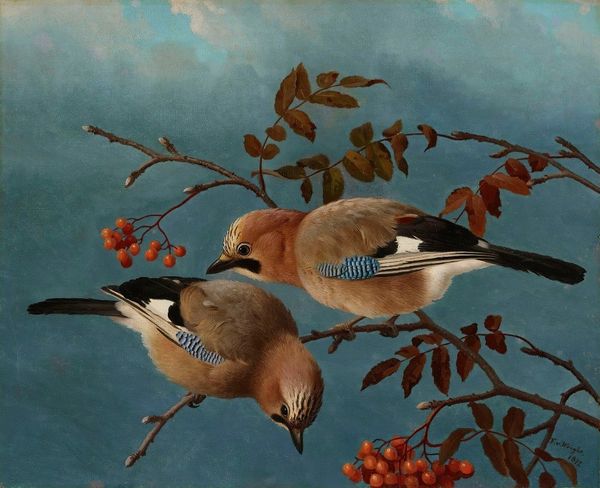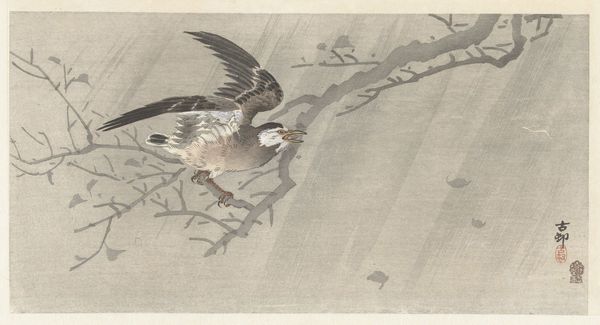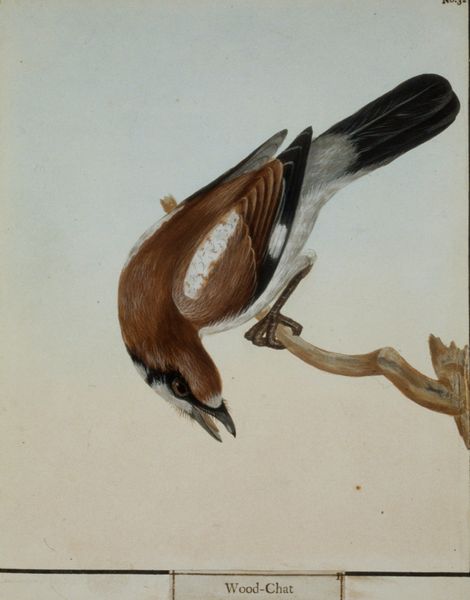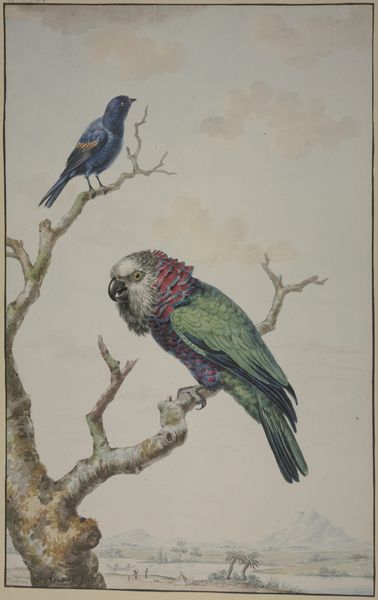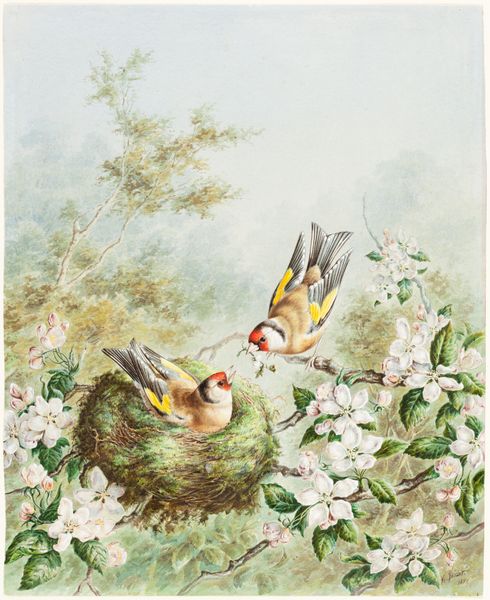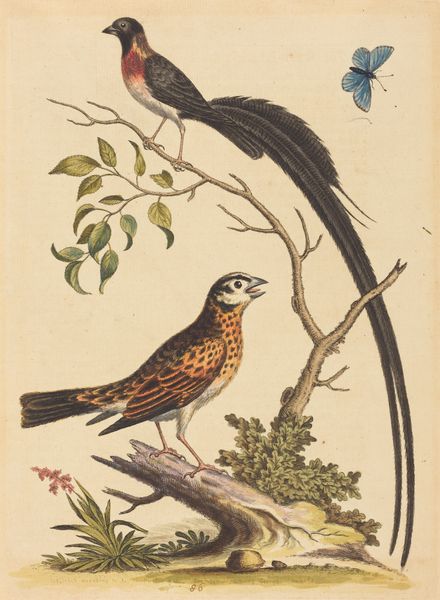
painting, watercolor
#
portrait
#
painting
#
landscape
#
watercolor
#
naturalism
Dimensions: height 280 mm, width 201 mm
Copyright: Rijks Museum: Open Domain
Curator: Look at this delicate watercolor painting by Barbara Dietzsch, created sometime between 1716 and 1783, titled "Sneeuwgors". Editor: There's such stillness here, despite the implied movement of the bird about to take flight. The muted colors lend a certain quietude to the scene, almost a gentle melancholy. Curator: Note the meticulous detail, especially in the bird's plumage. Dietzsch masterfully uses watercolor to create variations in tone and texture. Semiotically, the rising posture of the bird, wings spread, becomes a signifier of possibility or liberation. Editor: Absolutely. Birds, universally, symbolize freedom and the soul’s journey. The snow bunting here might represent resilience in harsh environments, given its association with snowy landscapes, urging a contemplation on endurance and inner strength. Its gaze directs our eyes up. Curator: Yes, the upward gaze directs us vertically, while the oblique positioning of the trunk and the spread of the foliage establish balance across the pictorial space. Notice too how the light—falling primarily on the bird and upper part of the trunk—functions as an anchoring device. Editor: Also interesting is how the soft focus on the distant trees creates depth, while simultaneously rendering the broader world secondary to the bird's immediate experience, creating a focused, internalized atmosphere. There's a narrative subtlety—suggesting the bird’s interior life perhaps, which compels deeper interpretation. Curator: I concur; the chromatic gradations coupled with a sense of arrested motion culminate to produce visual harmony within a framework governed by both naturalist representation and structurally sound design elements. Editor: Seeing this "Sneeuwgors" now makes me think differently about our relationship with the natural world and symbolic nature of fleeting moments, urging us to find symbolic significance and poetic beauty in simple observations. Curator: Indeed, Dietzsch presents us a finely composed study. This prompts a deeper engagement with how form and execution serve not merely as replication, but invite complex reflections regarding our perceptions of the natural world.
Comments
No comments
Be the first to comment and join the conversation on the ultimate creative platform.
